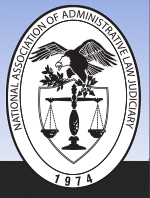Abstract
Three competing constitutional and practical concerns surround federal administrative law judges (“ALJs”), who preside over all formal adjudications within the executive branch. First, if ALJs are “inferior Officers” (not mere employees), as five current Supreme Court Justices have suggested, the current method of selecting many ALJs likely violates the Appointments Clause. Second, a recent U.S. Supreme Court decision reserved the question whether the statutory protections that prevent ALJs from being fired at will impermissibly impinge upon the President’s supervisory power under Article II. Third, these same protections from removal may, on the other hand, be too limited to satisfy impartiality concerns imposed under the Due Process Clause. Proposed reforms to the structure of administrative adjudication have failed to identify and address the three competing concerns. For instance, granting ALJs more job protection may improve their independence but further impede the President’s removal power. No literature has sought to resolve the quandary that these concerns present. An elegant solution, however, has hidden itself in plain sight within the Appointments Clause: permit the D.C. Circuit to appoint and discipline ALJs upon the request of agencies and interested parties. An interbranch appointment (i.e., one branch’s appointment of officers for another branch) resolves the three concerns identified here without offending the separation of powers. In particular, this mode of appointment would provide ALJs additional independence without offending the President’s removal power or undermining the D.C. Circuit’s judicial function. In proposing this solution, I offer a clarified analytical framework for Congress’s largely unexplored interbranch-appointment power, an underutilized tool for resolving difficult separation-of-powers problems.
Recommended Citation
Kent Barnett,
Resolving the ALJ Quandary,
33 J. Nat’l Ass’n Admin. L. Judiciary
Iss. 2
(2013)
Available at:
https://digitalcommons.pepperdine.edu/naalj/vol33/iss2/5
Included in
Administrative Law Commons, Constitutional Law Commons, Judges Commons, President/Executive Department Commons

